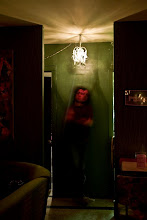
If questioned, it would be described as an mediocre film with decent arial stunts, but essentially a "Top Gun" rip-off.
Then I chose a theater where we would not be seen: Copley Plaza Cinemas in Downtown Boston, which was a full 3o-minute train ride from home.
Jack didn't care about the deception because he had been lying to his parents for years, sneaking out at night to oggle at hookers in the lobby of the Marriott near his house off the Charles River. On the other hand, I had never been so deliberately misleading. I was a good kid to a fault. But something about this film made me push my own self-inflicted boundaries.
As we approached the theater inside Boston's newest and most upscale mall (they had Lord and Taylor), my hands were wet. The indoor waterfall with geometric rock designs blurred into a shapeless mass of anxiety. Jack kept asking "you ok dude?" In fact, I was not ok. We arrived at the ticket booth and I said quietly
"Two tickets to 'Wild Orchid' please."

Yes, "Wild Orchid". Mickey Rourke's thematic companion to "91/2 Weeks". With this film, I imagined Rourke (and vicariously myself) revisiting and developing the emotional complexities and sexual exploits of his star-making vehicle with Kim Bassinger, but with a different locale and different lead actress (Care Otis). And this time, Rourke (who I saw as our generation's Brando) would raise the stakes - I had read that one of the sex scenes featured actual penetration, since he and Otis had apparently started dating during the filming. All of this made "Wild Orchid" essential viewing.
But as I watched Rourke and Care Otis in a seated position, legs crossed over each other and thrusting, it wasn't stimulating. The image was too clean, too pretty. I realized that my own preconceptions about the film were rooted in a private narrative that involved a summation of style and content from Rourke's best work: the grit of "Angel Heart", the tragedy of "Johnny Handsome", the poetry of "Rumble Fish" and the erotica of "9 1/2 Weeks". No film could deliver all that, it was too personal and too specific. In addition, I was uncomfortable watching celebrity soft porn in a public space. My sexual curiosities and insecurities were best left to safe, self-satisfying solitude or worked through by groping with a willing partner in the dark. They were not meant to be share with strangers over popcorn.
But there was an additional, welcome feeling that I was not expecting: adult sophistication. Zalman King's smoke-hued and glossy direction gave the proceedings an atmosphere of artfulness. The film created a visual environment that struck at base desire through photographic beauty, even though that desire was essentially theoretical and not executed to truly arouse. Nonetheless, the combination of images kept my attention: Care Otis and Mickey Rourke fuck in a tasteful color palette of light blue and white, followed by Rourke riding off on a red handlebar chopper into the spare, desert dusk. (This attempt at combining raw sexuality, high art and motorcycles would later be mastered by Vincent Gallo in his unduly panned gem, "The Brown Bunny". ) There was an assumption of maturity and aesthetic appreciation from the audience, which made me feel older-cool and art-savvy.
So the film finished and Jack said "That kinda sucked." I agreed. But I was still pleased. I had completed some sort of teenage right of passage: to lie to one's parents for the purpose of looking sex, even if it was in celluloid. And certain elements of the film piqued my curiosity. I made a mental note and kept that experience as a reference point for future artistic interests.

No comments:
Post a Comment